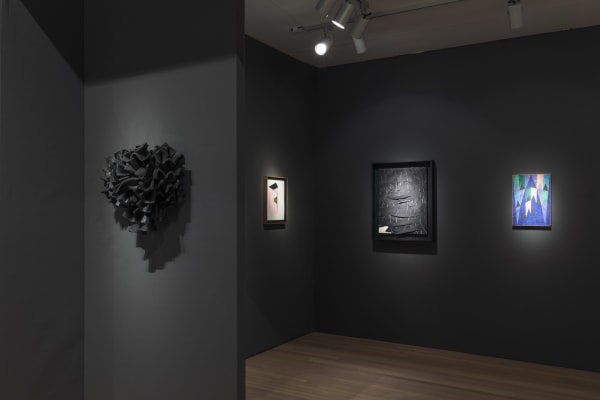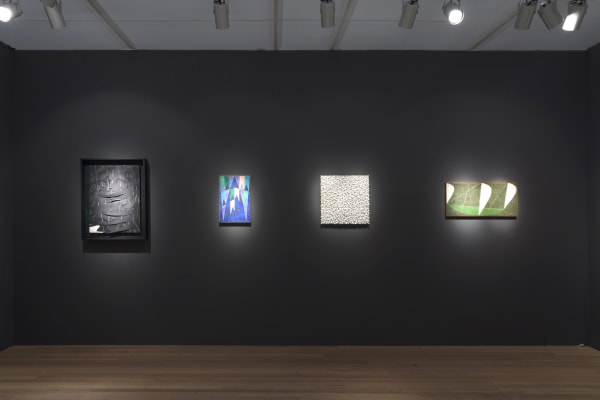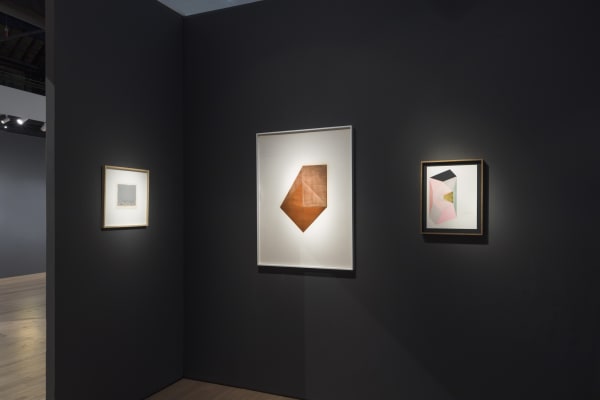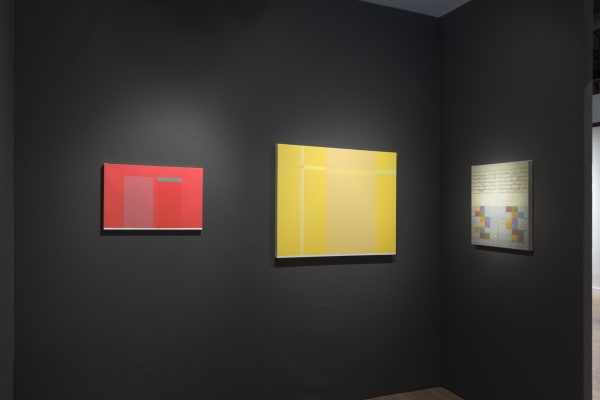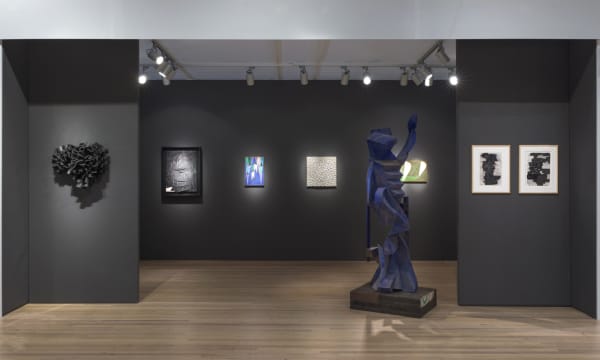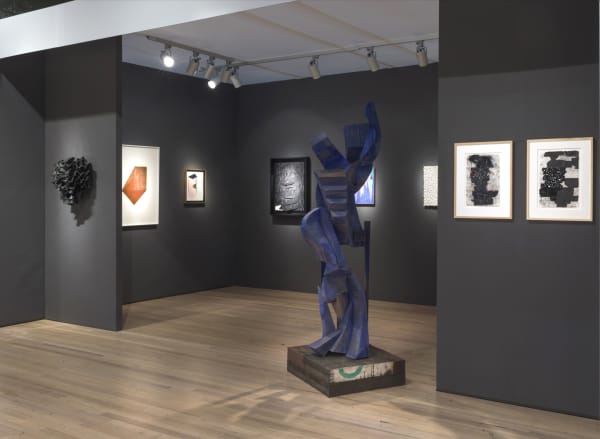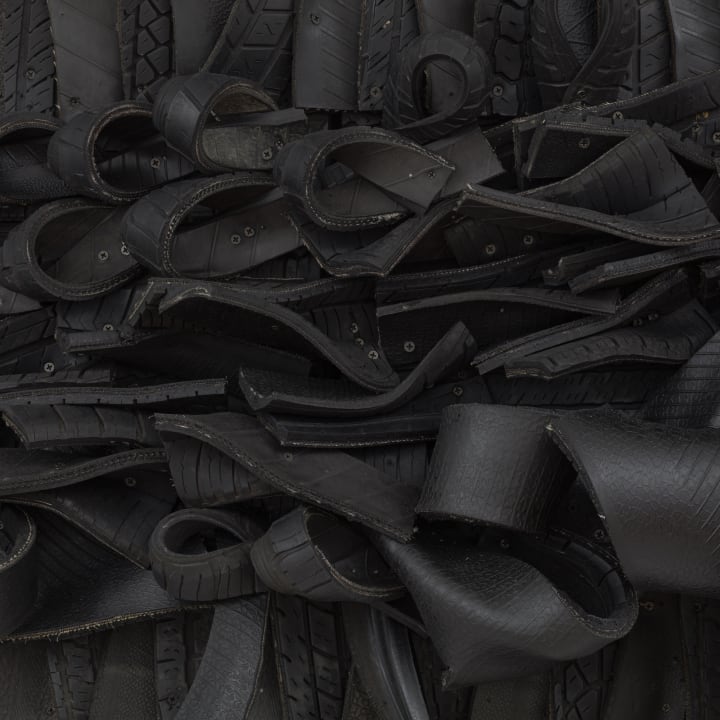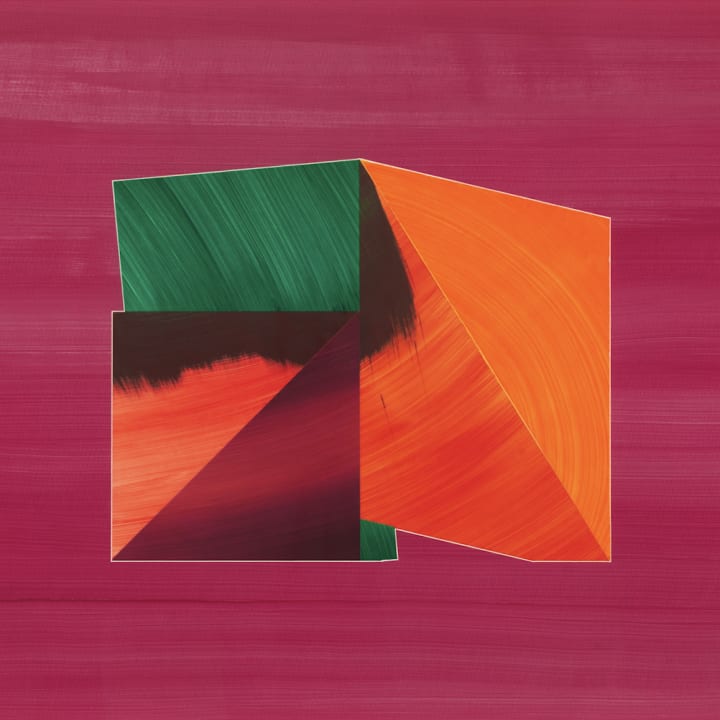For this edition of The Art Show, David Nolan Gallery is delighted to announce a group presentation of artists from different generations and cultures whose work deals with geometry and abstraction. The exhibition will emphasize the artists’ ability to communicate architecture and light via non-representational gesture, while establishing a dialogue among historically significant artists such as Sergio Camargo (1930-1990), Alfredo Volpi (1896-1988), Dorothea Rockburne (b. 1932), and Barry Le Va (1941-2021), who have been deeply influential to younger generations of artists.
In the works of the Brazilian artists, interest in geometry manifests in different forms that demonstrate innovations in abstraction and color. Sergio Camargo's monochromatic reliefs and sculptures are simple, elegant explorations of rationality and chaos, fullness and emptiness. The historian Gabriel Pérez-Barreiro described Camargo's reliefs as “white forms... constructed almost as a collage, with a pictorial rather than a sculptural logic." Camargo's 1970 white relief, resembling crystalline growth, generates a play of light and shadow across the surface that explores the organic and rhythmic disposition of the wooden pieces. Made of rubber tire, the monochromatic relief by Chakaia Booker (b. 1953) also explores the inherent nature of the medium through meticulous sculpture. While her elective material is uniform, Booker’s techniques range from shearing, weaving, riveting, and twisting into organic, expressive forms that steer toward abstraction but often anthropomorphize and historicize the physicality and labor inherent in her practice. The weaving texture resonates in a pencil drawing by Richard Artschwager (1923-2013), who would find his multi-decade inspiration in the six interior elements (Door, Window, Table, Basket, Mirror, Rug) he portrayed in inventive compositions in drawings, paintings, objects and multiples. A similar investigation of architecture and interior elements characterizes the work of Julia Fish (b. 1950). Fish's study of her home and studio in Chicago subverts the traditional architectural protocol, “working from house to plan." By focusing on thresholds as both architectural elements and metaphors, Fish harnesses the coding potential of color to represent directional, designated space and in effect, light. The complex systems embedded in her schematic works act as a visual language that is uniquely her own.
Alfredo Volpi created naïve yet erudite compositions distinguished by a linear emphasis of form that held a special place in the evolution of geometric abstraction at his time, and occupied a place between Brazilian Modernism and later experimental art of the 1950s and 1960s. In the late 1940s and throughout the 1950s, Volpi began depicting the façades of buildings and traditional flags. The flags were bandeirinhas, associated with Brazilian folklore and popular at Brazilian festivals, and so served to culturally locate his work. Marked by playful repetition and the rhythmic interaction of exuberant colors and simple, geometric forms, the flags themselves are reduced essentially to abstraction. Paulo Pasta (b. 1959), who looks to Volpi as one of his influences, also utilizes geometry and color as a central element, presenting "landscapes" of a different type. His elegant and poetic compositions are representations of imagined space, where parallel and perpendicular diagonal lines suggest a metaphysical architecture rendered in evocative hues of oil paint that the artist’s hand mixes to perfect tonality. In conjunction with the The Art Show, Paulo Pasta will have his first exhibition at David Nolan Gallery, which marks the artist's first solo presentation in North America at large.
For half a century Dorothea Rockburne has been at the top of her game proving her versatility through time. Since her first solo show at the Bykert Gallery, New York, in 1970 Rockburne has referenced the Golden Ratio and Giotto's frescoes with her own original visual language, recreating the careful architectural harmony of proportioned objects and spaces so prevalent during the Renaissance. Jorinde Voigt (b. 1977) utilizes her own coded mark-making to create works composed of structured notational systems of music, geometry, mathematics, and philosophy. There is a beautifully rational element to Voigt’s paper constructions, which study the space-making qualities of drawing in three-dimensions, and give room for the eye to what lays beyond the shapes on paper.
An investigation of architecture is found in Barry Le Va's drawings, which encapsulate his experimentation with spatial dynamics challenging relationships between objects and their viewers. Next to Chalk Installation, a precise diagram drawn on graphing paper, the expressive nature of the Bunker Coagulation drawings relates to Le Va’s capricious large-scale installations of the same name. The exploration of the relationship between object and viewer is also central in the sculptures by Mel Kendrick (b. 1949), whose unique approach to art-making is fueled by a tireless inquiry into the seemingly limitless possibility of sculpture. Over five decades, Kendrick's sculptures have evolved in unique directions, exploring the properties of wood, rubber, and most recently, concrete, while laying bare the process of making. The works that result from his endless experimentation double as meditations on the nature (and history) of sculpture, finding new ways to approach formal oppositions such as inside and outside, positive and negative, organic and geometric, and nature and culture.
